Should you raise your baby to be bilingual? Are video games rotting or rejuvenating children's brains? We find out! Plus in the news, personalised breast milk, modelling the brain with computers, how crude oil spills affect tuna and the next step towards nuclear fusion.
In this episode

- Mini Robots inside cells?
Mini Robots inside cells?
For the first time, scientists at Penn State University have placed tiny synthetic motors inside live human cells, propelled them with  ultrasonic waves and steered them magnetically.
ultrasonic waves and steered them magnetically.
It's not exactly "mini RoboCop quite yet," says lead author Professor Tom Mallouk, but he does hope, in the future, such nanobots will be able to cruise around patient's bodies, diagnosing and treating infection and removing cancers.
In nature biological systems have evolved small scale motor systems to help move things around. During cell division, for example, DNA is dragged to opposite sides of the cell using something similar to rope being hauled in. Bacteria use corkscrew shaped tails to propel them through liquid.
Scientists have been trying making inorganic versions of these types of transport systems but have struggled finding the right fuel for these chemical motors. Published this week in Angewandte Chemie International Edition, a new approach has been created: fueling nano motors using ultrasound and magnets.
Lead author Wei Wang made, completely by accident, a rocket shaped chemical motor, instead of the traditionally tested cylindrical motors they use. He was in a hurry in the lab and plated out the motors slapdash, serendipitously producing these new, more streamlined, shaped bots.
He found he could then propel these bots inside cells using ultrasonic waves (using the same ultrasound intensity used when imaging a baby in womb, so not at levels dangerous to humans) and was able to steer the motors using hand held magnets that were only slightly more powerful than the earth's magnetic field.
The scientists hope such technology will, in the future, help get rid of brain tumours, clean up cholesterol in clogged up arteries and help diagnose disease.
They are now trying to link the nanobots to computer chips and sensors so that the bots can communicate within the environment they are in, and to a surgeon sitting at a computer screen.
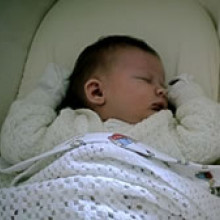
01:30 - Personalised breast milk
Personalised breast milk
Breast milk varies hugely from mother to mother but researchers now think that 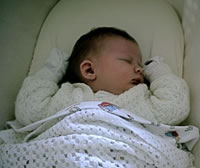 different milk is produced for boys and girls. Kate Lamble spoke to Katie Hinde from Harvard University to find out more.
different milk is produced for boys and girls. Kate Lamble spoke to Katie Hinde from Harvard University to find out more.

04:27 - Modelling the brain
Modelling the brain
Researchers have begun to model the brain using a computer but they'd need a power  station to model the whole thing!
station to model the whole thing!
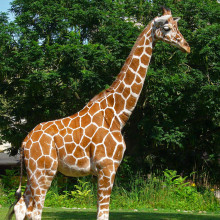
08:42 - Marius the Giraffe
Marius the Giraffe
Last week a young, physically healthy giraffe called Marius in a zoo in Copenhagen was put down, amidst an uproar from animal lovers. The zoo argued that it had to be done to prevent inbreeding, and produce a healthier population of giraffes. Here's your Quick Fire Science on the subject....
- Last week a young, physically healthy giraffe called Marius in a zoo in Copenhagen was put down, amidst an uproar from animal lovers. The zoo argued that it had to be done to prevent inbreeding, and produce a healthier population of girraffes.
- Inbreeding is when genetically closely related animals mate and bare offspring together.
- This raises the chance of harmful traits being passed down the generations, so reduces the fitness of a population.
- The European Association of Zoos and Aquaria (EAZA) runs a breeding programme for giraffes, which has been very successful. They supported the decision to put Marius down.
- Giraffes live in groups with one male and a number of females- young males have to be removed when they reach sexual maturity to prevent fighting
- The giraffe in questions was genetically similar to others in the breeding programme, so it was decided that for the health of the population it was best for him not to breed.
- Castration and contraception were decided not to be feasible alternatives as both require sedation, which is dangerous for giraffes.
- Yorkshire Wildlife Park in the UK, offered to take Marius, but because Marius' older brother lives there Copenhagen Zoo decided the space would be better off given to a genetically different giraffe.
- There has been public outcry and controversy over Marius' fate - this case raises a lot of questions over the right humans have to control an animal's life, are zoos ethical and how should species conservation programmes be managed.
- Inbreeding can happen in the wild if a population becomes isolated, for example on an island. These populations are then very susceptible to disease
- In humans due to the desirability of royals marrying other royals, some dynasties became very inbred, and suffered health problems.
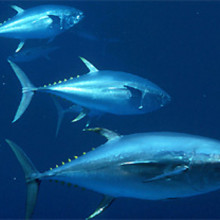
10:53 - How oil spills affect Tuna
How oil spills affect Tuna
with Barbara Block, Stanford University and Nathaniel Scholz, NOAA Fisheries
Back to Chicago where it seems they've got more news than even snow at the moment! 
One of the papers announced at the conference earlier this week, investigated the effect of crude oil in tuna fish embryos and specifically how it could impact their hearts. Researchers hoped that this work could explain how large oil spills such as the Deepwater Horizon disaster in 2010 impact spawning sites.
Chris Smith spoke to Barbara Block from Stanford University and Nathaniel Scholz from NOAA Fisheries

16:37 - Coping with extremes is in the genes
Coping with extremes is in the genes
We may think it's cold and miserable here in the UK in winter, but it's nothing compared to what polar bears have to put up with in the Arctic. 
Although their black and brown bear cousins hibernate for the winter, and pregnant female polar bears hide out in dens during the coldest months, other polar bears brave the Arctic winter.
So how do these bears cope? New research from scientists, led by a team at the University at Buffalo in the US, suggests that the answer lies in their genes - specifically genetic adaptations that control the production of a chemical in the body called nitric oxide, which cells use to convert the nutrients in food into energy and heat.
Comparing DNA from 23 polar bears, three brown bears and a black bear, the researchers discovered key differences between polar bears and their cousins in the genes that control nitric oxide production.
The chemical is thought to help cells switch between generating energy from food, to keeping warm, or storing energy as fat, suggesting that this is helping the polar bears adapt to life in the freezer.
But what about animals living in other types of extreme climates? Interestingly, a related story was published this week from a team of Chinese, US and Canadian researchers who've been looking at Tibetan Mastiffs - dogs that are adapted to living up in the mountains at very high altitudes, which were originally domesticated from native dogs living on the Chinese plains.
Led by Dong-Dong Wu, the researchers scanned through the genomes of 32 Tibetan Mastiffs, and compared them to 20 Chinese native dogs and 14 grey wolves.
They identified 16 key gene variations that seemed to be particular to the mastiffs, and found that around 12 of them were relevant to life at high altitude.
While the genes identified in the polar bear were involved in keeping the animals warm, the dog genes seem to be focused on how to generate energy in the low oxygen conditions you get up at high altitude.
Similar gene signatures have been found in other high-altitude animals, suggesting that similar gene pathways evolve independently to cope with the extreme conditions.
Intriguingly, one gene found in the Tibetan Mastiffs, called EPAS1, has also been implicated in adaptation to low oxygen by Tibetans themselves. So maybe the dogs and their owners have evolved together to cope with life up the mountains, although this needs to be explored further to be sure.
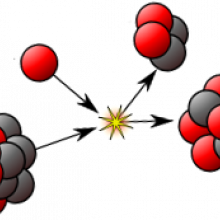
19:12 - Fusion experiment breaks crucial energy
Fusion experiment breaks crucial energy
Powerful lasers have managed to trigger a controlled fusion reaction that releases more energy than was absorbed by the fuel. It marks a 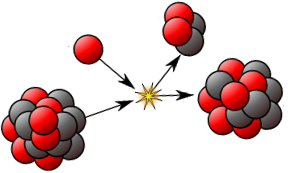 key milestone in the quest to generate useful power by squashing together the nuclei of atoms.
key milestone in the quest to generate useful power by squashing together the nuclei of atoms.
The National Ignition Facility (NIF) in Livermore, California, uses 192 high-powered lasers to fuse deuterium and tritium - heavy isotopes of hydrogen - inside a fuel pellet the size of a pea.
This pellet is held inside a gold container called a hohlraum. When the lasers hit the hohlraum, it creates a burst of X-rays that force the fuel pellet to implode, reaching millions of degrees and crushing the nuclei inside until they fuse - a process that converts some of their mass into energy.
For the first time, the experiments have released more energy from the fuel than was put in by the X-rays - about 1.2 to 1.9 times more. Although this amounts to only 1% of the original laser energy, because most of that was absorbed by the hohlraum
To achieve true 'ignition', there would have to be an overall energy gain. Researchers at NIF boosted the energy yield of the fusion reaction by tuning the lasers so that they delivered more of their energy earlier in the pulse.
This made the fuel pellet less unstable as it imploded, and also prevented some of the energetic fusion debris from escaping, so that it could help to trigger more fusion reactions. It's an important milestone for NIF, which has struggled to reach key goals such as this.
Last year, NIF's research programme was restructured so that it spends more time doing nuclear weapons research, with the aim of keeping warheads safe and reliable without needing detonation tests.
Meanwhile, the world's biggest fusion project, ITER, is still likely to be the first reactor to produce substantially more energy than is put in. This giant, donut-shaped reactor, which will contain its fuel within powerful magnetic fields, is being built in Cadarache, France. With a budget of EUR15 billion, project managers hope it will start to generate power in 2028.
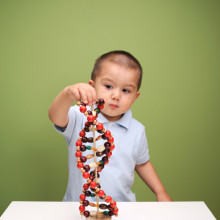
22:39 - 'Motherese' Melody
'Motherese' Melody
with Usha Goswami, Cambridge University.
Brainy babies now, and what makes for a child prodigy? Should you raise your baby to be bilingual? And are video games rotting, or rejuvenating, childrens' brains? Hannah Critchlow was joined by Professor Usha Goswami from Department of Psychology, Cambridge University...
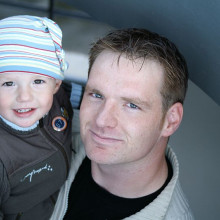
27:30 - Speaking quicker from birth
Speaking quicker from birth
with Anne Fernald,Stanford University
Why do some children's language skills progress more quickly than others? Kate Lamble, 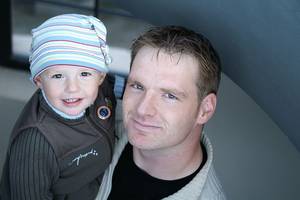 reporting from Chigaco at the AAAS Science conference, met Dr Anne Fernald from Stanford University to find out more about how a child's background could shape their language skills and their chances in later life....
reporting from Chigaco at the AAAS Science conference, met Dr Anne Fernald from Stanford University to find out more about how a child's background could shape their language skills and their chances in later life....

35:47 - Learning from video games
Learning from video games
with Daphne Bavilier, University of Rochester
When we want our children to learn we might give them books, take them on trips or  even just help them do their homework - but what about getting them to play a action packed shooting based video game?
even just help them do their homework - but what about getting them to play a action packed shooting based video game?
It might not be the first thing to spring to mind but Daphne Bavilier from the University of Rochester believes that these specific types of games can help attention, multitasking and even eyesight. Kate Lamble met up with her at the AAAS conference in Chicago.
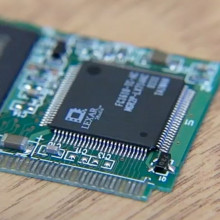
41:48 - Interpreting emotions with computers
Interpreting emotions with computers
with Peter Robinson, Cambridge University
Could computers ever have the power to predict our emotions and change them? or ![]() even to read our minds? Kat Arney was joined by Professor Peter Robinson who's a Computer scientist at Cambridge University.
even to read our minds? Kat Arney was joined by Professor Peter Robinson who's a Computer scientist at Cambridge University.

Can listening to music stimulate your brain?
Transcript to follow...
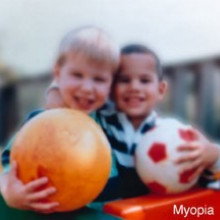
Is it better to raise your babies bilingual?
Transcript to follow...
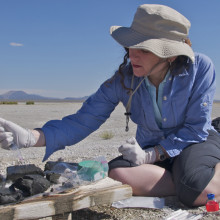
How do you become a scientist?
Transcript to follow...
Why do we have "handedness"?
Transcript to follow...
- Previous The Noro Show
- Next Can a brain scan tell if you are depressed?










Comments
Add a comment